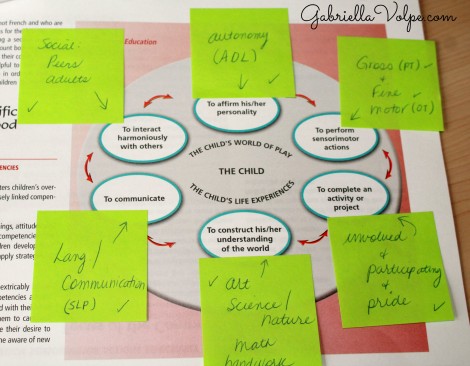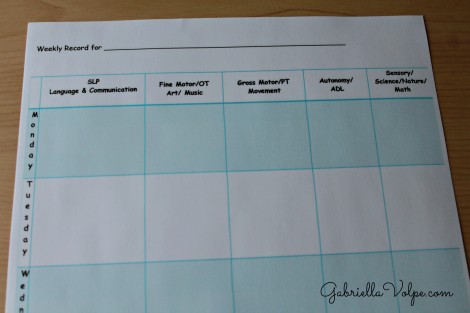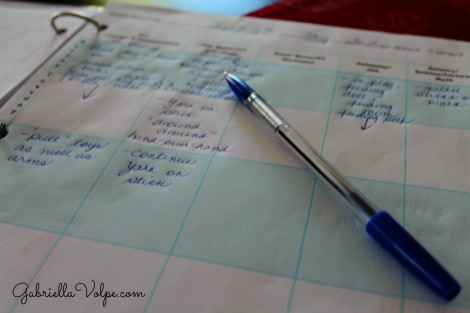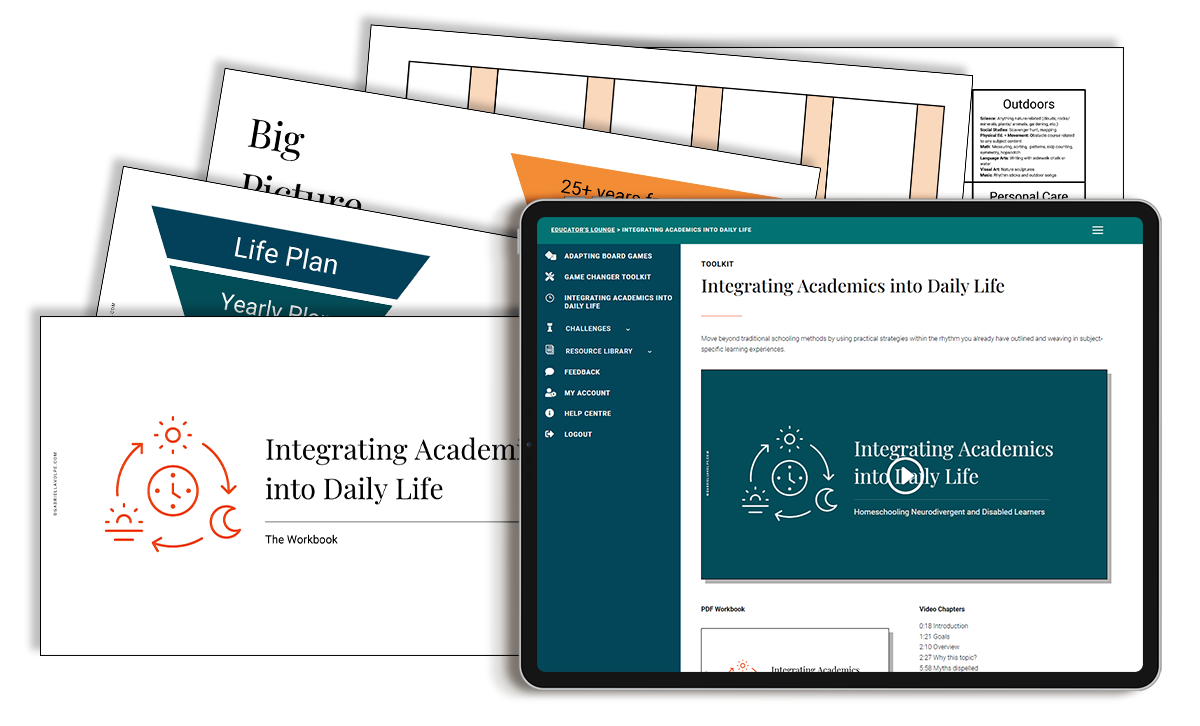Part 1 – Outline your beliefs
Part 2 – Finding your child’s preferred “intelligence(s)” and learning style
Part 3 – Choosing a learning style
Part 4 – Locating the curriculum/program and finding resources
Part 5 – Adapting/Modifying the curriculum
Part 6 – Mapping out the year
Part 7 – Mapping out the months
Now that you have clarity on what you’ll do each month, you can officially sit down to plan the weeks in a particular month. I plan the weeks one day at a time (yes, one day, not one week at a time) because so much can happen and shift daily. I like the freedom of being able to tweak my plans based on my daily observations.
While it’s a great idea to have a monthly overview, planning exactly what you’ll do each week can become so overwhelming that you may find yourself blocked (is there such a thing as planner’s block?) Coming to a dead end will not motivate you to keep going. Keep this as simple (and as stress-free) as possible.
The difference between planning each week and daily planning for the week
When you plan each week of the month, you are breaking down your monthly objectives by week—ahead of time.
For instance, if you are choosing to make September, say, “Apple month,” your smaller objectives might be to experience sensory activities with apples, read books/stories about apples, go apple picking, bake with apples, do some numeration and sorting using apples and seeds, and also learn about the parts of an apple.
You can list these objectives/activities and then plot them into your calendar on a weekly basis. For example, you might choose to read stories and do some sensory activities in the first week of the month, do some math and science in the second week of the month, go apple picking and bake in the third week of the month, and so on.
While this seems like a great planning solution, you’ll likely run into two problems:
- You’ll feel restricted by the weekly plan—possibly causing you and your child stress.
- Your weeks aren’t going to be well-rounded—not allowing your child enough practice with a particular skill.
When you plan daily for the week, you fundamentally dissolve the issues of planning restrictions and unbalanced skill acquisition.
Here is what I developed to help me make weekly planning easier and ensure that I touch on a little of everything each week.
Remember when we talked about curriculum in part 4 and part 5? I listed and categorized all of the goals (therapeutic and personal) and matched them with the standards/competencies required for the preschool level (the level my son is presently at, more or less).

My brainstorming lists all therapy and personal goals and matches them with the provincial curriculum.
I took the categories that I was meant to target, and I created this weekly planning chart:

My weekly planner. You’ll notice that I have a column for each standard/competency and a row for each day of the week.
How to use the weekly planning chart on a daily basis
1- Plug in all activities going on this week that might interrupt the academics. Are there appointments? Sporting activities? Gatherings with friends? Write those in first so that you don’t forget. It also gives you an overview of how many days you really have this week to work on specific skills.
2- Using the monthly objectives you’ve already devised (part 7), list specific skills and activities you’d like to do. There is no need to get fancy. Brainstorm in your Homeschool Reflections journal.
3- Decide which of the specific skills/activities you want to work on this week.
4- Slot in a few of those activities under the headings in your chart for Monday. You know how much your child can handle in one day. Don’t feel pressured to fill in each box for each category. Not only is that unrealistic, it’s also unnecessary. Remember that your child has the entire week to work on the skills you’ve outlined. Space them out. and make it doable.
5- After you’ve completed your day, decide if that was too much, too little, or just enough? Then, decide if your child needs more practice with the task or if you can move on to something else you wanted to accomplish this month. This quick daily assessment helps me tremendously with my planning. By the end of that day, I know whether I need to keep reinforcing the skill, if and how I should tweak it, or if I can drop it altogether because he’s achieved it—or even surpassed it (maybe the activity I had planned was below his skill level).
6- Then, follow steps 2 to 5 again for Tuesday. Repeat.

My weekly planner is set up as a visual tracker of all the skills I want to tackle in one particular week, even though the planning is done daily.
When planning for subsequent days, this chart clarifies what you need to add so that the week is well-balanced. If all you have planned is language and crafting activities for Monday through Wednesday, you’ll be able to visually track what’s lacking by Thursday. You may decide that you should probably include some science, nature, and math activities.
Questions to ask yourself while planning your week:
- What are the curriculum requirements for my child’s level?
- What are our monthly objectives? Therapeutic objectives to meet the curriculum requirements this week?
- If my child needs more practice with a specific skill, in which categories can we implement the practice this week?
Important note: Be sure the goals are neurodiversity- and disability-affirming. The idea is to create goals that reduce or remove barriers to learning, not to “fix” or change the child. Further, goals should always be set with and not for the child.
Resources:
A copy of my weekly planner – I’ve created a version where you can change the category headings to suit your needs (fillable PDF)
Planning & Organizing – My Pinterest board with an ever-growing assortment of planning tips
Spacing out monthly plans into weekly plans is simple enough to do once you get the hang of it. Would you like some help with this? We can discuss your monthly goals and have them match up with therapeutic objectives and your province/state’s curriculum.

Integrating Academics into Daily Life Workshop
Discover how to integrate academics into daily life. For homeschoolers of neurodivergent and disabled learners.

Amazing work on here! Congrats and very well done:)
Thanks for the words of encouragement, Cynthia! I feel honored that you visited!
Excellent visuals to support all homeschooling parents both beginners and seasoned ! 🙂
Thank you for that feedback, Maria! I’m happy to have you here!